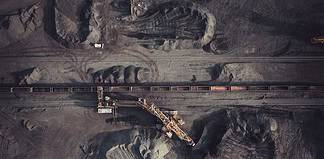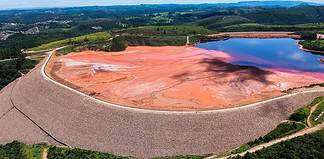Coates, Australia’s largest equipment hire company with over one million pieces of equipment across 21 categories, now offers innovative drone inspection for industrial infrastructure.
Using drones, Coates can quickly and safely inspect industrial assets on mining sites and then create a 3D model, or ‘digital twin’, to help plan maintenance programs. With this technology, mining site managers can reduce asset downtime, inspection costs and risks to workers. Armed with complete knowledge of their physical assets, managers can also boost productivity and profitability on their site.
We look at how this technology works and why it’s a must in mining asset management.
How it Works
Manual inspections typically require scaffolding, rope teams and shutting down the asset for extended periods, with gathered data often limited to drawings and photographs with accompanying notes.
Drones, meanwhile, capture images from all angles and at millimetre resolution to inspect assets such as conveyors, stacks, pressure vessels, buildings and boilers in just a few hours. Once the drone inspection is finished, Coates creates a 3D model of the asset using the hi-res imagery. Asset managers can then access the digital rendering via an online portal to mark defects using annotation cards, collaborate with teams, create maintenance plans and download complete reports. The data also allows managers to track and monitor the asset’s condition over time and compare the same asset side-by-side to develop a comprehensive asset history.
Jeff Allen, National Industrial Services Manager of Coates, says, “Our drone technology enables the safe and easy inspection of all assets, including hazardous areas, or confined spaces. From a site planning perspective, it answers many questions at the front end in a quick and safe manner. Unlike traditional methods, where you would need to build a scaffolding model or turn off an asset to inspect it, we use the drone to provide a 3D model that can be shared with anyone, instantaneously, across the globe.”
Beyond asset inspection and confined space inspections, Coates’s drone technology can also be used for NDT inspections, thermal imaging and gas detection.
Benefits
Drone inspections are safer, quicker and more cost-effective than traditional physical inspections.
Safer: From a risk perspective, drone inspection removes the need for workers to have to inspect assets at height, in hazardous and confined spaces, or close to functioning assets.
“Coates provides drone services with Civil Aviation Authority approval and full Safe Work Method Statement (SWMS) and Job Safety Analysis (JSA) documentation,” says Jeff. “The safety implications are huge – by using drones, you’re taking people out of dangerous situations, especially for height inspections where you’d normally need scaffolds or rope access teams to carry these out.”
Quicker: Drone inspection reduces asset downtime. Coates’s team can be in and out of the job site within hours or a couple of days, depending on the scale of the inspection. A manual inspection would require scaffolding, which can take weeks to build and tear down, requiring the asset to shut down for a longer time.
Cheaper: Finally, one of the most significant advantages of using drone inspection for mining asset management is the huge financial savings. Because there are no scaffolding or equipment requirements, no rope access teams, and no need to switch assets off, using a drone is a quicker and cheaper option.
Easier: Drone inspections are typically only required periodically. There is no need to maintain your own drone assets and digital technology. Coates is equipped for ad-hoc inspections or regular planned inspections.
The future of asset management is here. To learn more, visit Coates. 












































